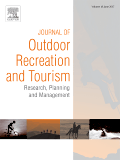Using discrete choice experiments to examine the stepwise nature of avalanche risk management decisions—An example from mountain snowmobiling
Abstract
The risk from avalanches when travelling in uncontrolled backcountry terrain is managed by a) assessing current conditions based on available information and b) adjusting terrain choices to keep the residual risk below the personal risk tolerance level. Mountain snowmobilers have become an increasingly important target audience for North American avalanche warning services due to a significant increase in the number of related avalanche fatalities in recent years. Having an in-depth understanding of currently used avalanche safety practices is critical for developing effective prevention initiatives.
This paper presents an analysis of a sequence of three consecutive and incrementally expanding discrete choice experiments (DCE) that were embedded in an extensive online survey on mountain snowmobiling and avalanche awareness conducted in British Columbia, Canada. The series of DCE explicitly emulates the stepwise nature of the risk management process by representing key decision points in avalanche risk management: planning a trip from home, at the staging area, and riding in the backcountry. Participating mountain snowmobilers were provided with increasingly detailed avalanche safety information and their task was to choose their riding terrain accordingly. In the analysis, the progression was implemented by including the terrain preferences identified in the preceding DCEs as personalized constants in the multinomial logistic regression model of the next DCE. The results of this study provide valuable insight about the current strengths and weaknesses in the avalanche risk management practices of mountain snowmobilers and the realism of the results confirms the value of carefully designed DCEs for avalanche safety research.

